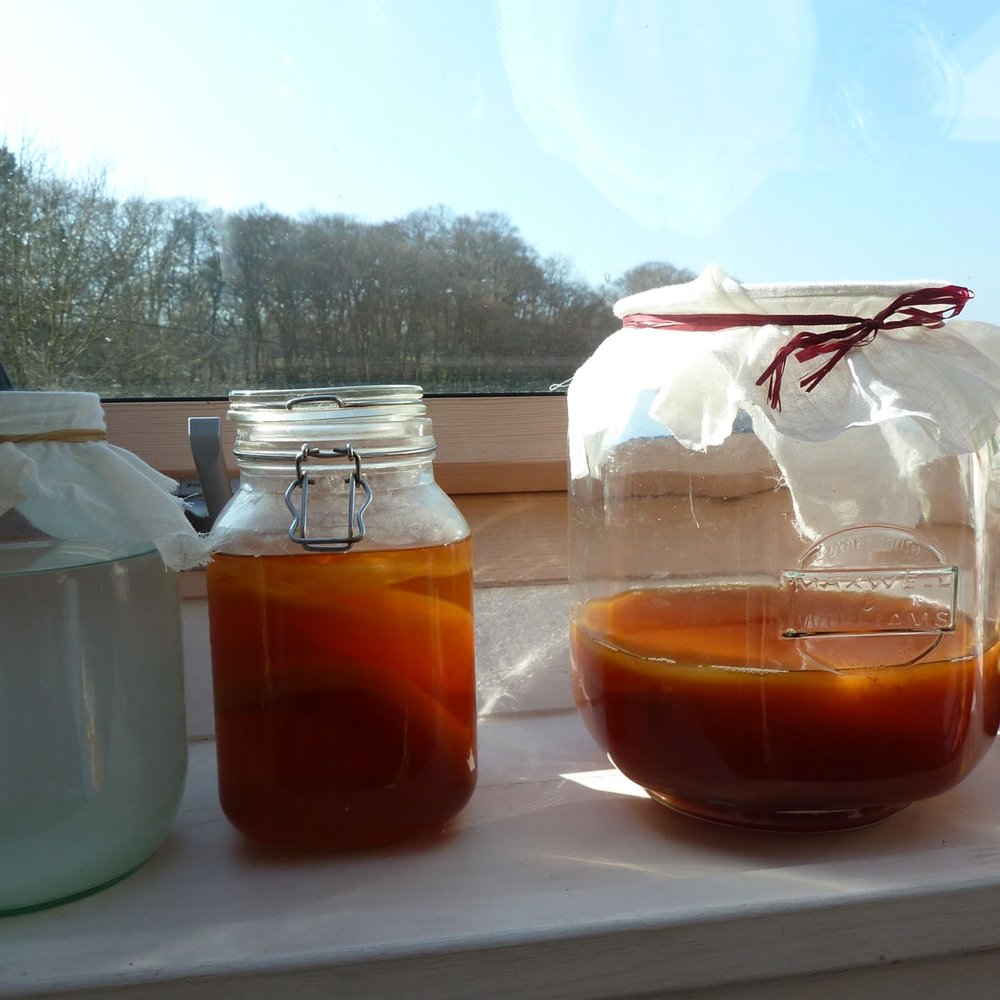TRACEBRIDGE FERMENTERIA
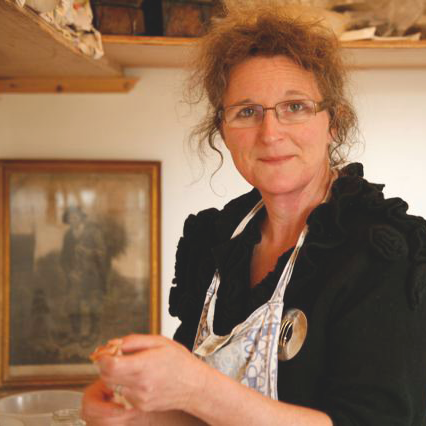
Fermenteria is a made up word, which we think best describes our love of fermenting and how it has taken over our home.
Katie first encountered milk Kefir when a friend gave her ‘magic grains blessed by the Dalai Lama’ long before the current interest in a healthy gut and fermented foods.
Experimenting with sauerkrauts, Kimchis and Kombucha, the family developed a taste for the complex sour flavours and satisfying crunch of lacto-fermented vegetables. Our great-grandmothers knew about preserving the Summer’s glut for the Winter store cupboard and Katie loves passing these skills onto a new generation of home cooks and gardeners.
Katie says, “Fermented foods and probiotics are popular in national media right now but they aren’t a fad, they’ve been part of healthy diets for centuries.”
The Fermenteria grew out of Katie’s enthusiasm for sour tastes and healthy eating. She's been honing her skills as a fermentisita since 2012 and is now sharing her practical know-how with introductory classes and one-to-one tutorials.
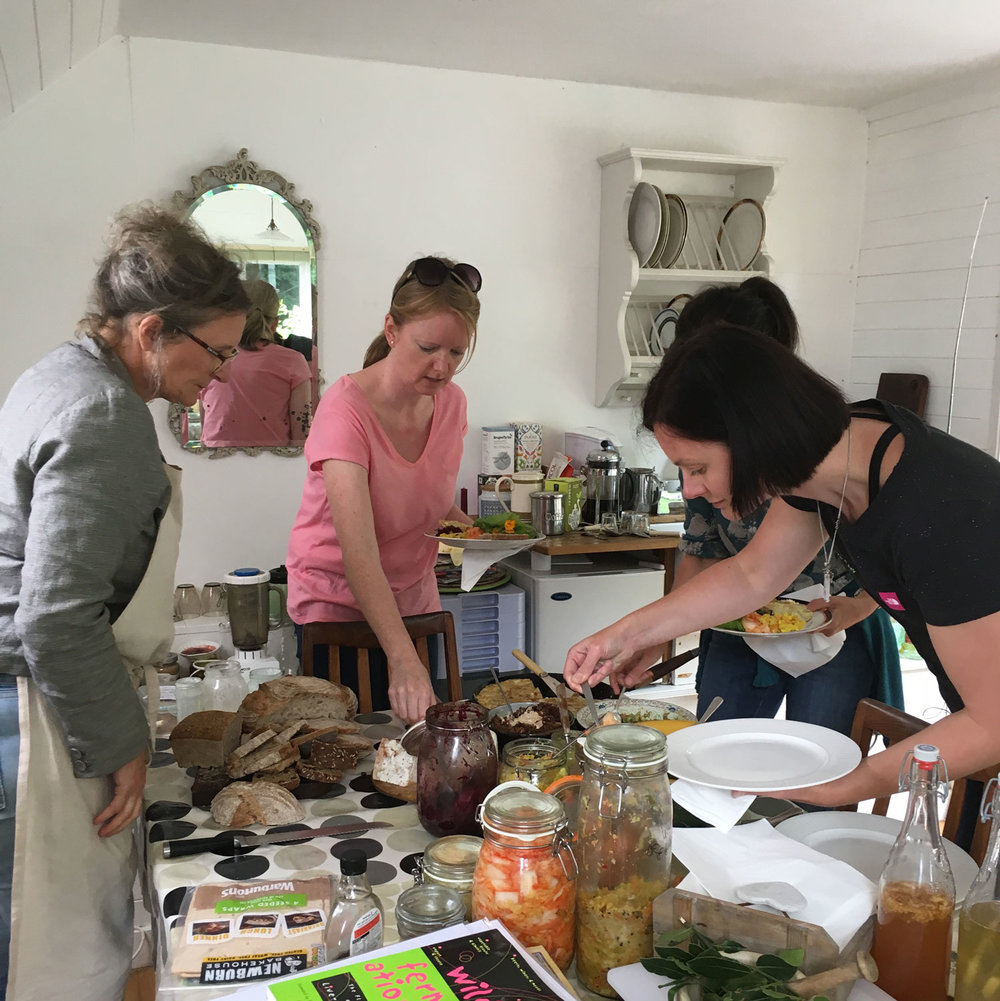
LEARN HOW TO TRANSFORM SEASONAL PRODUCE INTO DELICIOUS FERMENTED FOODS AND DRINKS
We offer classes on how to make your own fermented vegetables and drinks and make small batches of Kimchi, Kombucha, Kefir and Sauerkraut for sale.
To get started in fermenting your own foods, we recommend our class, Introduction to Fermenting Vegetables and Drinks.
For more information, go to our Classes page.
HOW TO EAT FERMENTED FOODS
For some, the tangy taste of fermented foods must be acquired. Start by eating a spoonful regularly and soon you’ll be craving it. Friends report that the more fermented foods they eat the less they crave sugary foods and alcohol. I’d agree.
A flavourful kraut or punchy kimchi is an excellent accompaniment to casual lunches and dinners – and try piccalilli for giving the humble sandwich a lift.
READ ABOUT THE SAUERKRAUTATHON
How the record for the largest dish of lacto-fermented sauerkraut made it into the Guinness Book of World Records and why Katie and Jo Webster attempted it.
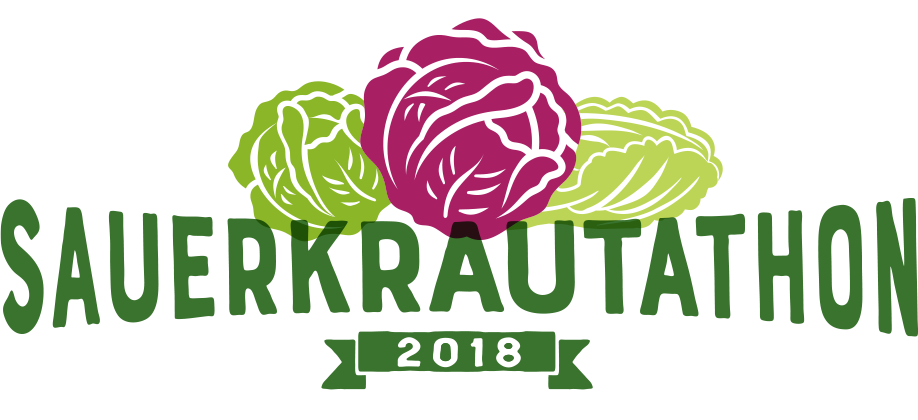
START WITH A CABBAGE
If you can't get to a class, yet you're keen to get going right away, have a look at our Basic Sauerkraut Recipe. A few simple ingredients and some clean jars is all you need to get started.
This is a return to real food packed with nutrients, and it starts with a cabbage.
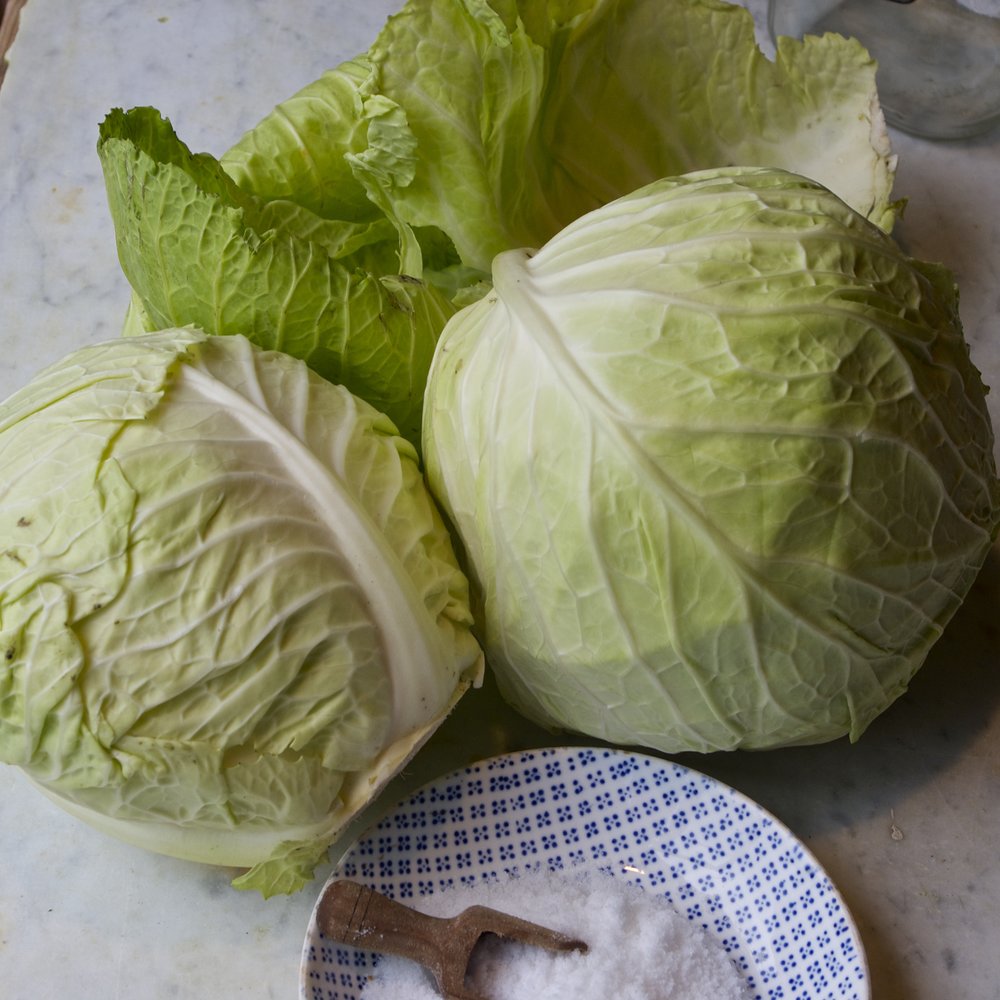
WHY FERMENTED FOODS?
The main reason we like fermented foods is for their taste and that we can preserve for later what’s growing in abundance (and at its best) in the garden.
Recently there has been a lot more research about the benefits of including fermented foods in our diets. If you want to read more about their benefits, we recommend Sandor Katz’s comprehensive book, The Art of Fermentation, as a place to start.
Extravagant claims are often made for the positive impact of fermented foods on a range of ailments and diseases, so be sure to check the validity of information.
Our own experiences.
Anecdotal evidence from family and friends that have been eating fermented foods for a while suggests that joint pain can be alleviated as can a ‘sweet tooth’. Another friend reports a reduced appetite for alcohol.
ORGANIC OR NOT?
I’d always try to use organic veg (or pesticide free) as the pesticides spayed routinely on non-organic veg may affect the bacteria and yeasts on the veg and impair the fermentation. Aim for the main ingredient of your kraut, which is often cabbage, to be organic.

_6a03b3d3mc0nd7nf65fgty.jpg)
_uv8bfzxjkscm6n6iwswrbj.jpg)
